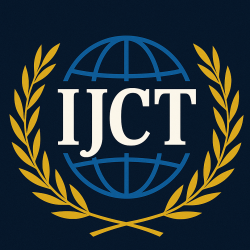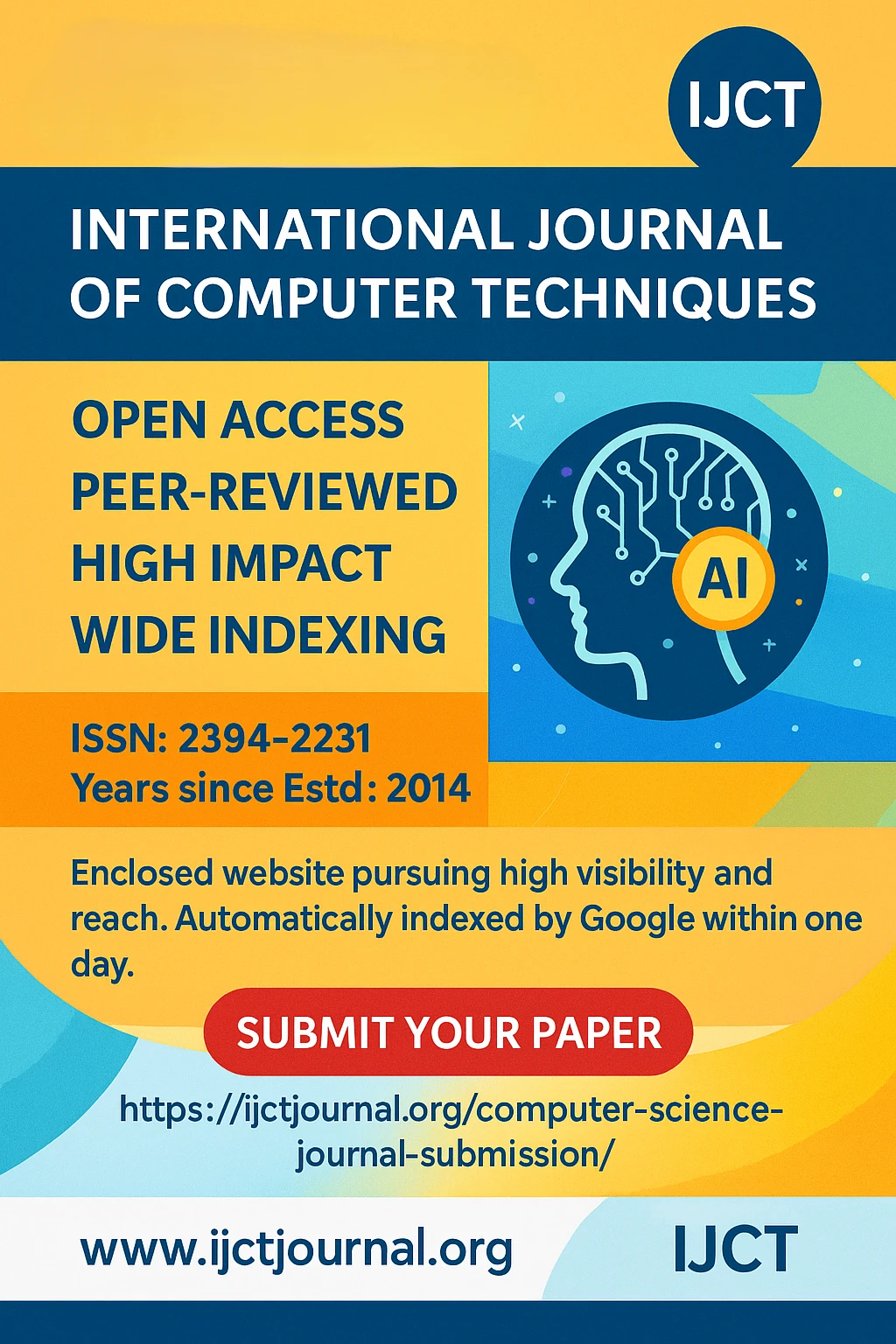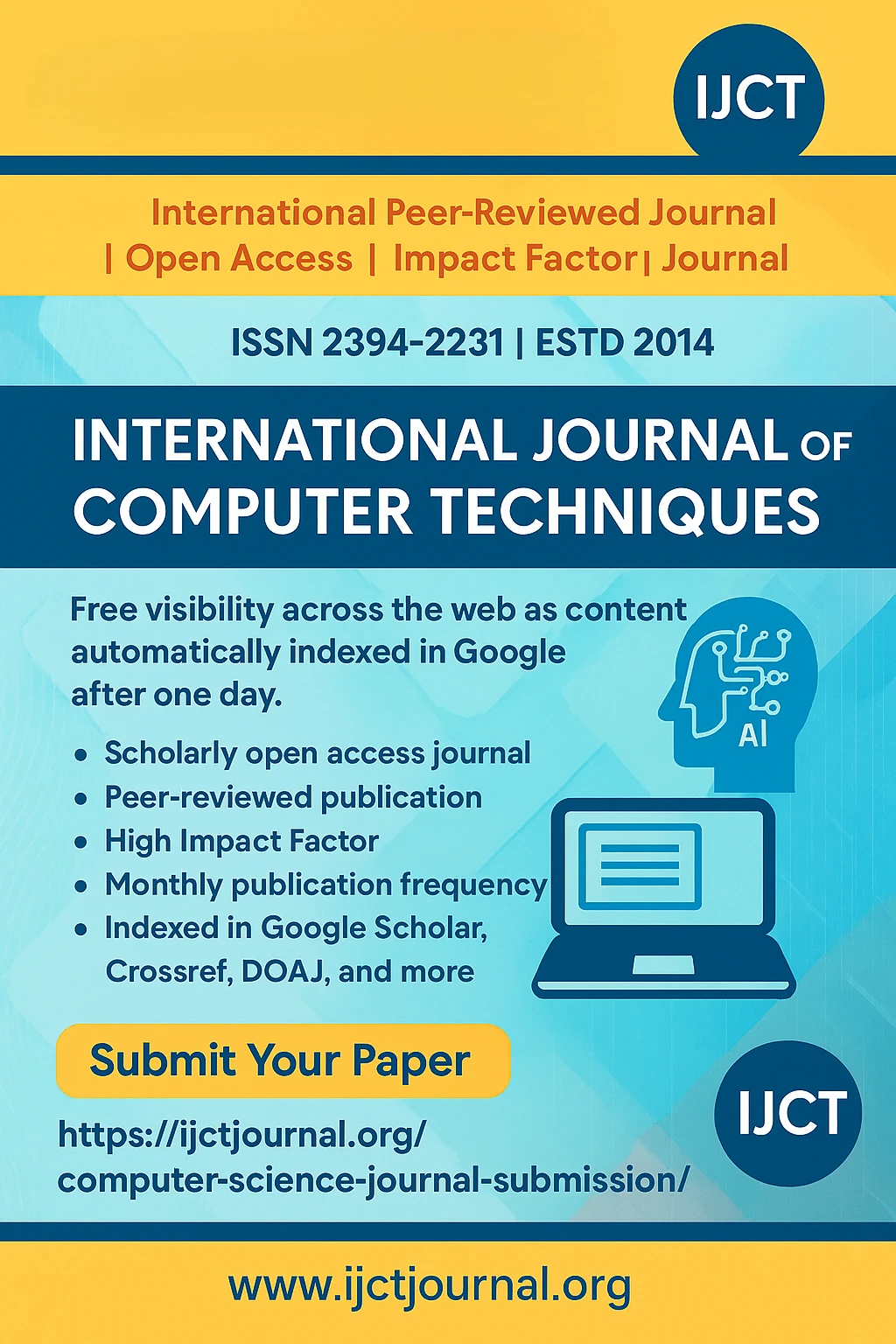
HYBRID BLOCKCHAIN-BASED VOIP CALL VERIFICATION SYSTEM | IJCT Volume 12 – Issue 5 | IJCT-V12I5P75

International Journal of Computer Techniques
ISSN 2394-2231
Volume 12, Issue 5 | Published: September – October 2025
Author
VIGNESH S , SHREYAS N ,
ATHULJITH P , VINAY KUMAR TV
Table of Contents
ToggleAbstract
In today’s telecom industry, billing disputes, call fraud, and data manipulation have become critical challenges. Traditional VoIP systems depend on centralized databases to store Call Detail Records (CDRs), making them prone to tampering and transparency issues. The proposed project, “Hybrid Blockchain-Based VoIP Call Verification System,” introduces a decentralized solution where call records are cryptographically hashed and stored on a blockchain for verification. This hybrid model combines blockchain immutability with off-chain scalability to ensure tamper-proof, verifiable, and transparent CDR management. Customers can independently confirm their call authenticity via a web portal. By integrating blockchain, VoIP, and off-chain storage, this project enhances trust, accountability, and data integrity across telecom systems, addressing a major gap in the current ecosystem.
Conclusion
The integration of blockchain technology within telecommunications represents a paradigm shift in how data integrity, transparency, and trust are managed across digital communication networks. The study and system proposed under the Hybrid Blockchain-Based VoIP Call Verification Framework demonstrate that decentralization and immutability can effectively overcome the vulnerabilities associated with traditional centralized VoIP infrastructures.
Through a hybrid architectural design, this project unites the strengths of blockchain — such as immutability, distributed consensus, and cryptographic verification — with the scalability and performance advantages of off- chain storage systems like PostgreSQL and IPFS. This dual-layer approach ensures that critical call records remain verifiable and tamper-proof, while the system continues to operate efficiently even under large-scale telecom workloads.
One of the major contributions of the proposed model is the introduction of a customer-facing verification portal, enabling end users to independently validate the authenticity of their call records. This addresses one of the most persistent gaps in telecom operations — the lack of transparency and customer empowerment. By providing real- time access to blockchain-anchored verification data, the project fosters an environment of digital trust between service providers and subscribers.
Additionally, the integration of real-time tamper detection mechanisms establishes a proactive security layer. Any attempt to alter or falsify stored Call Detail Records (CDRs) is immediately identifiable through hash mismatches, ensuring accountability and preventing fraud at the earliest stage. The combination of immutability, verifiability, and scalability distinguishes this framework from earlier blockchain-only implementations, which often suffered from high latency, cost, and limited throughput.
From a research perspective, the project contributes a scalable, cost-efficient, and privacy-aware model that aligns with both academic recommendations and industry requirements. It offers a blueprint for deploying blockchain- based verification systems across telecom networks without compromising compliance with data protection regulations such as GDPR.
Looking ahead, this hybrid model serves as a foundation for future innovations, including AI-driven fraud detection, decentralized identity integration, and cross-operator settlement automation. Its modular architecture ensures adaptability to new technologies, allowing continuous evolution as the blockchain and telecom ecosystems mature.
In conclusion, the proposed system provides a practical, secure, and verifiable solution to long-standing challenges in VoIP call management. By combining blockchain’s transparency with off-chain efficiency, it establishes a trust- centered communication framework capable of transforming telecom billing, auditing, and customer verification processes. This research thus marks a significant step toward the realization of a fully transparent, tamper-proof, and future-ready telecommunication infrastructure.
References
1.Swan, M. (2015). Blockchain: Blueprint for a New Economy. O’Reilly Media.
2.Crosby, M. et al. (2016). Blockchain technology: Beyond Bitcoin. Applied Innovation Review.
3.Liang, H. et al. (2020). Blockchain-Based Secure Signaling for VoIP Networks. IEEE Access.
4.Qin, Y. et al. (2019). Blockchain-Enabled Telecom Billing System. Elsevier Journal of Network Systems.
5.Zyskind, G. & Nathan, O. (2015). Decentralizing Privacy Using Blockchain. IEEE Security & Privacy.
6.Sengar, R. et al. (2017). VoIP Security and Fraud Detection in IP Telephony Systems. Springer.
7.Hyperledger Fabric Documentation. https://www.hyperledger.org/
8.Asterisk Official Docs. https://www.asterisk.org/
9.Kshetri, N. (2020). Blockchain’s roles in meeting key supply chain management objectives. Int. J. Inf. Mgmt.
10.Ganache Docs – Ethereum Test Network. https://trufflesuite.com/ganache/
Journal Covers
IJCT Important Links
© 2025 International Journal of Computer Techniques (IJCT).











